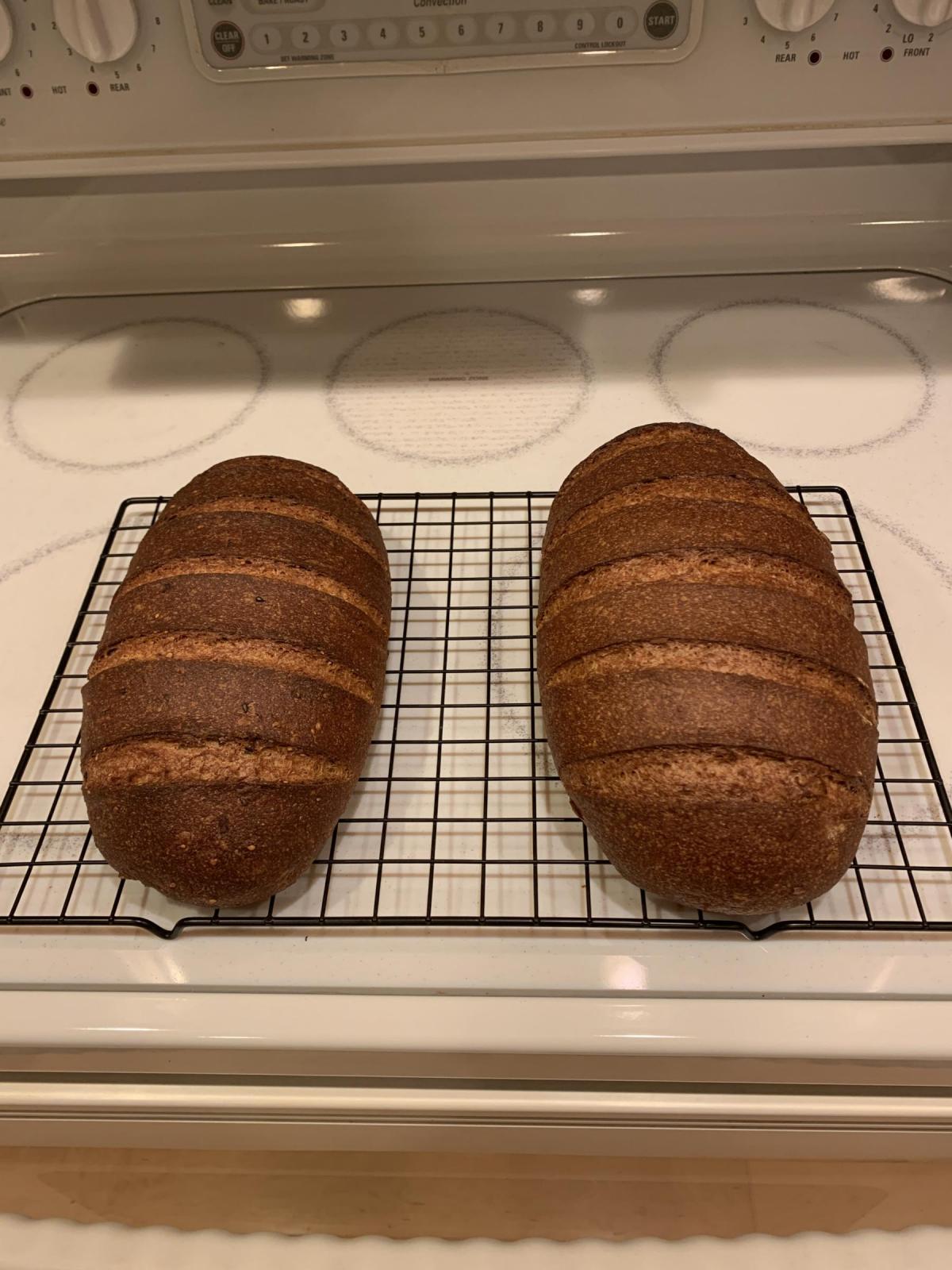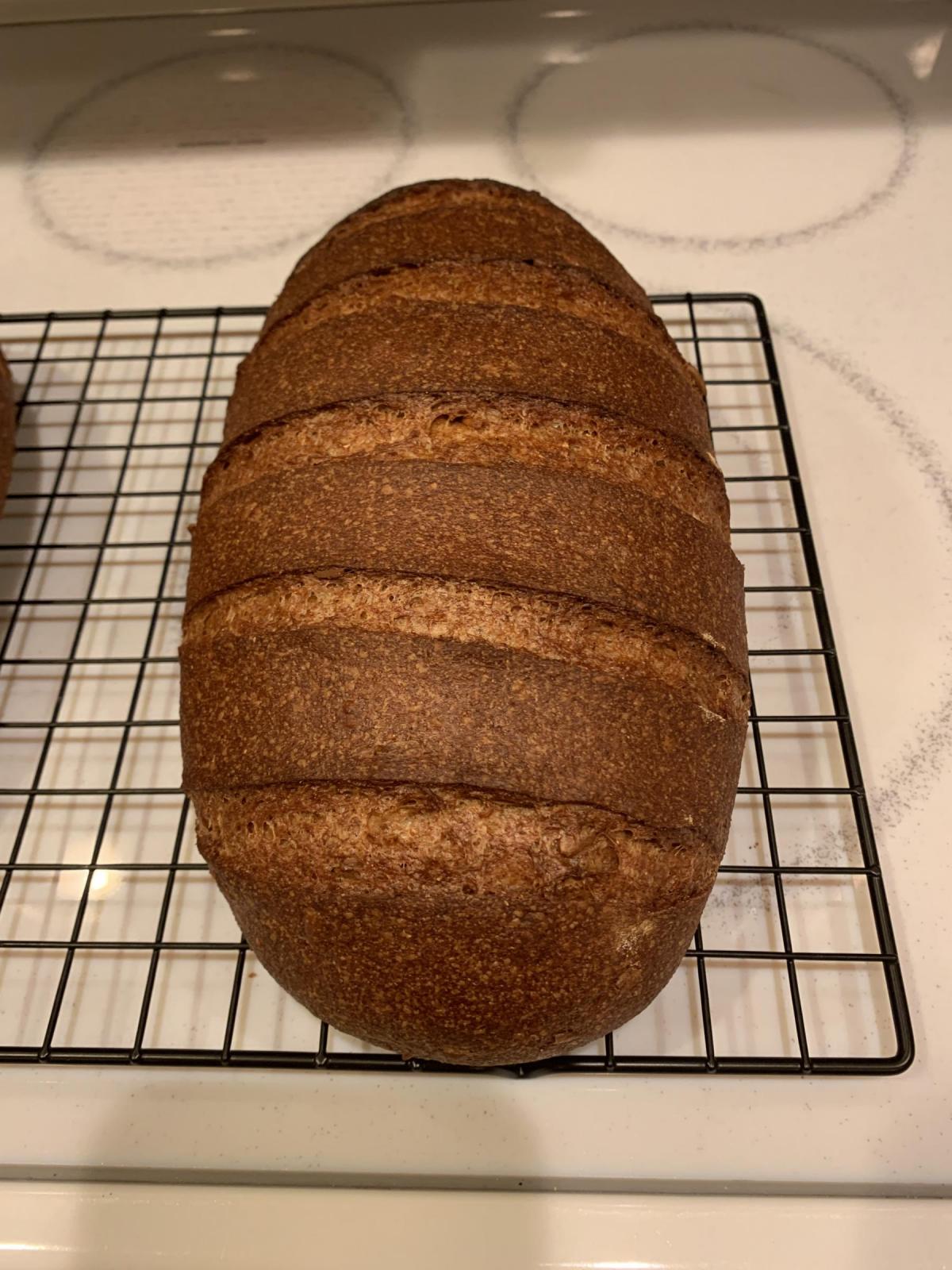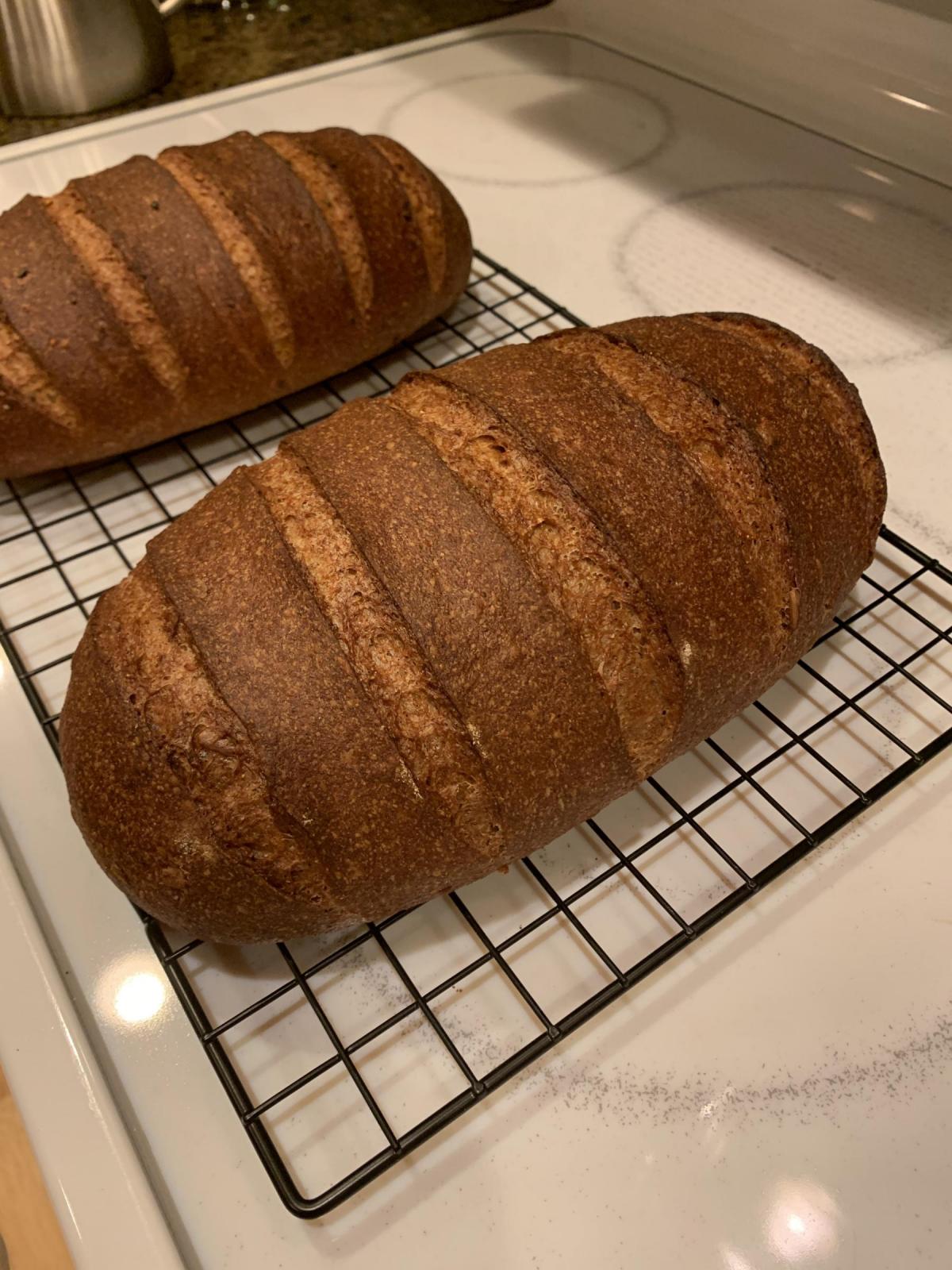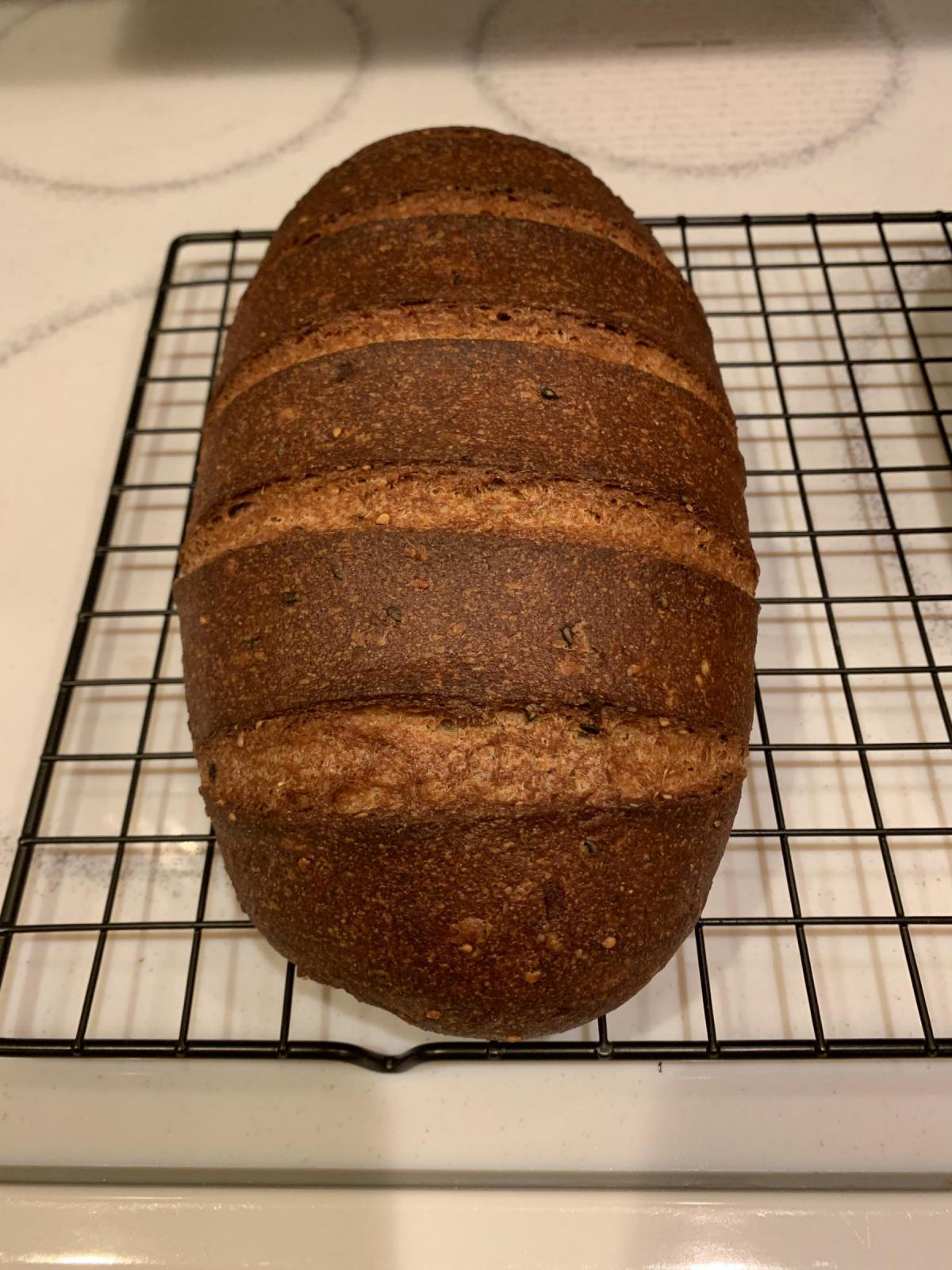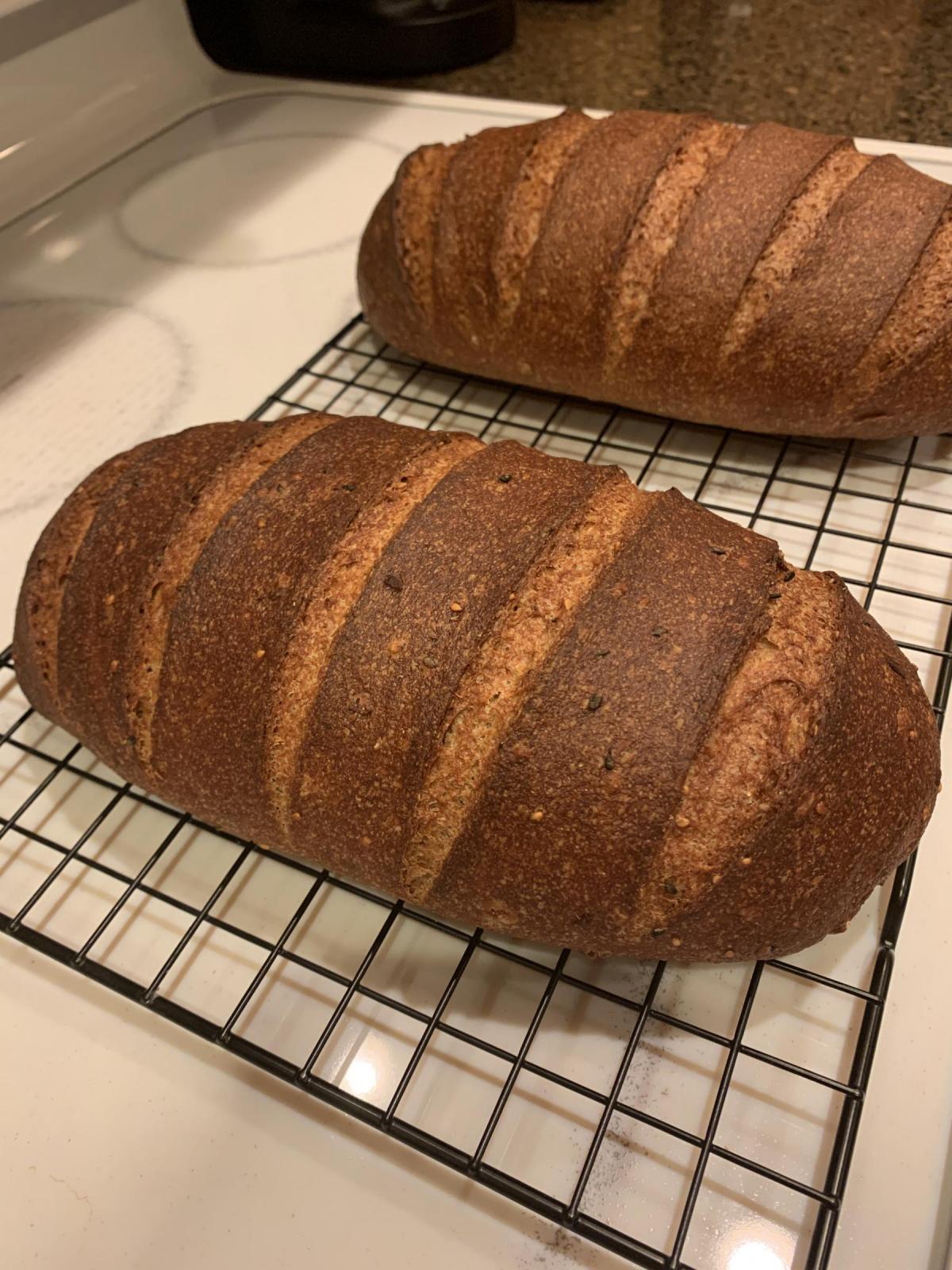Day 1
Hard to believe it's been almost a year since I've made a blog post! The timing for the latest Community Bake was perfect as I've been wanting to try variants of two breads I've made recently. The two breads are quite different, but both follow the same method... A 2-build poolish using yeast water (14% PFF) combined with a loose biga (60% hydration) using ADY (10% PFF).
The yeast water was refreshed last weekend and refrigerated. It was pulled from the fridge this morning to warm up and get good and active. My yeast water has changed a bit over the last year. I've stopped using honey and sea salt and have gone to a combination of blueberries and peeled Pink Lady apples.
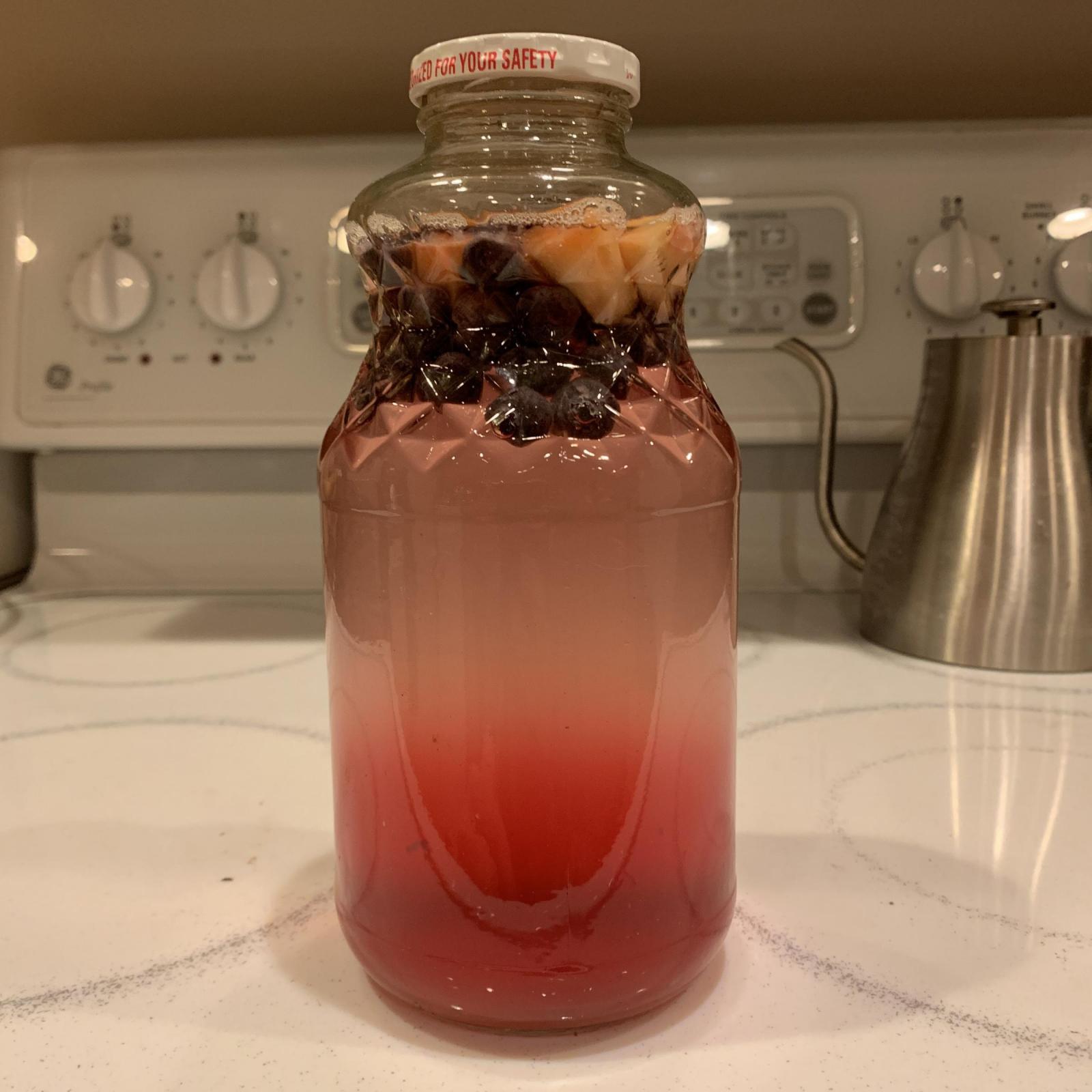
The poolish for both breads was started late tonight and should be ready for mixing around 7:00-8:00 PM tomorrow night.
Method for both breads
1) Start first poolish build 18-20 hours before mixing. Ferment 1st build at 75-77 deg F for 12 hours.
2) After 12 hours, combine 1st build with 2nd build ingredients and ferment at 75-77 deg F for 6-8 hours (or up to 12 hours if needed to develop good fermentation activity)
3) Combine scald ingredients with boiling water at the time of the 2nd build. Cover and let cool on counter.
4) Mix biga ingredients at time of the 2nd build and ferment at 75-77 deg F for 6-8 hours.
5) Leaving out the salt, combine final dough ingredients with poolish, biga and scald. Mix until flours are just wetted. Fermentolyse for 15-20 minutes.
6) Add salt and develop dough to medium gluten using your preferred technique.
7) Stretch and folds on 30-45 minute intervals until dough starts to show signs of fermentation. Cover and refrigerate overnight to finish bulk.
8) Remove from refrigerator and let dough warm up at room temperature for 15-20 minutes. Degas dough and pre-shape followed by 30-45 minute bench rest.
9) Shape for pan or banneton depending on preference/dough strength.
10) Bake after final proof.
It's late... Ingredients lists and photo updates tomorrow...
Day 2
Busy day but making progress...
The 1st yeast waster build doesn't look all that impressive. Because of the high hydration (200%), there really isn't a dough. It's more like a soup and any fermentation gases are usually not trapped. You won't see much. Just a few bubbles in the dough and maybe a couple on the surface. But... the aroma coming from the container when opened lets you know good things are happening!
Rye poolish after 1st build
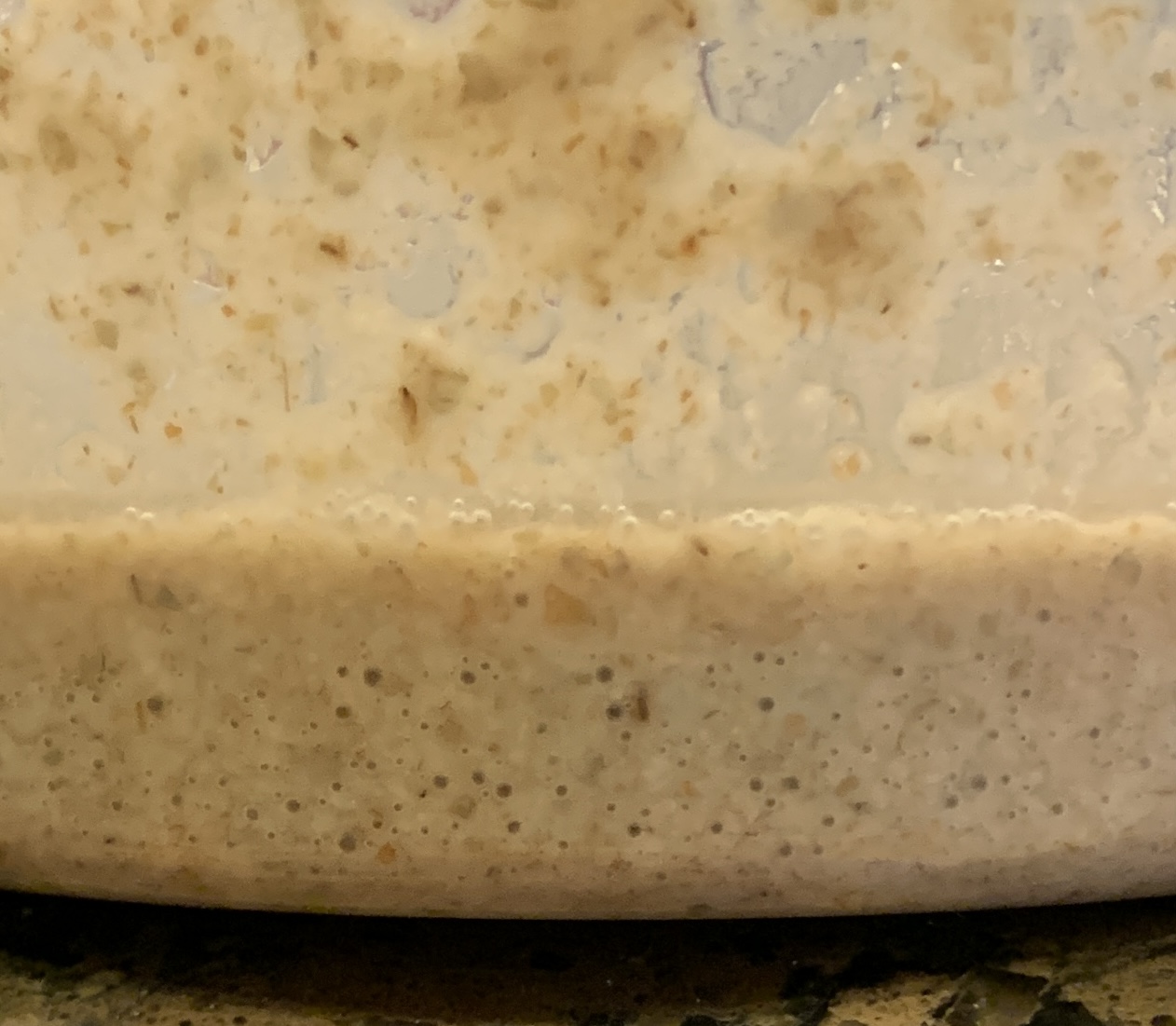
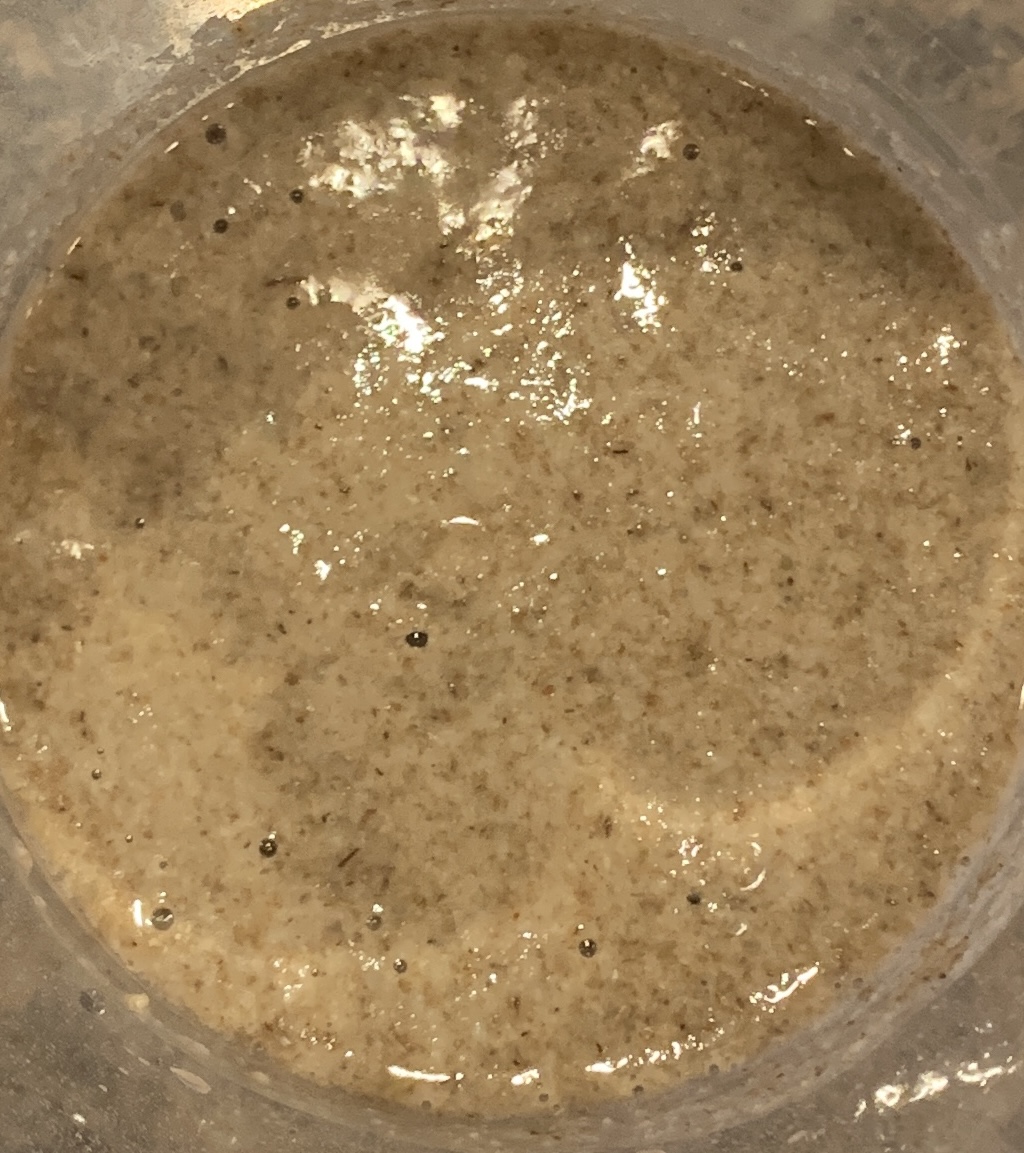
Kamut poolish - 1st build. The Kamut is harder and a little coarser than the rye. Notice how the fermentation bubbles have classified the bran to the top leaving the flour to settle to the bottom.
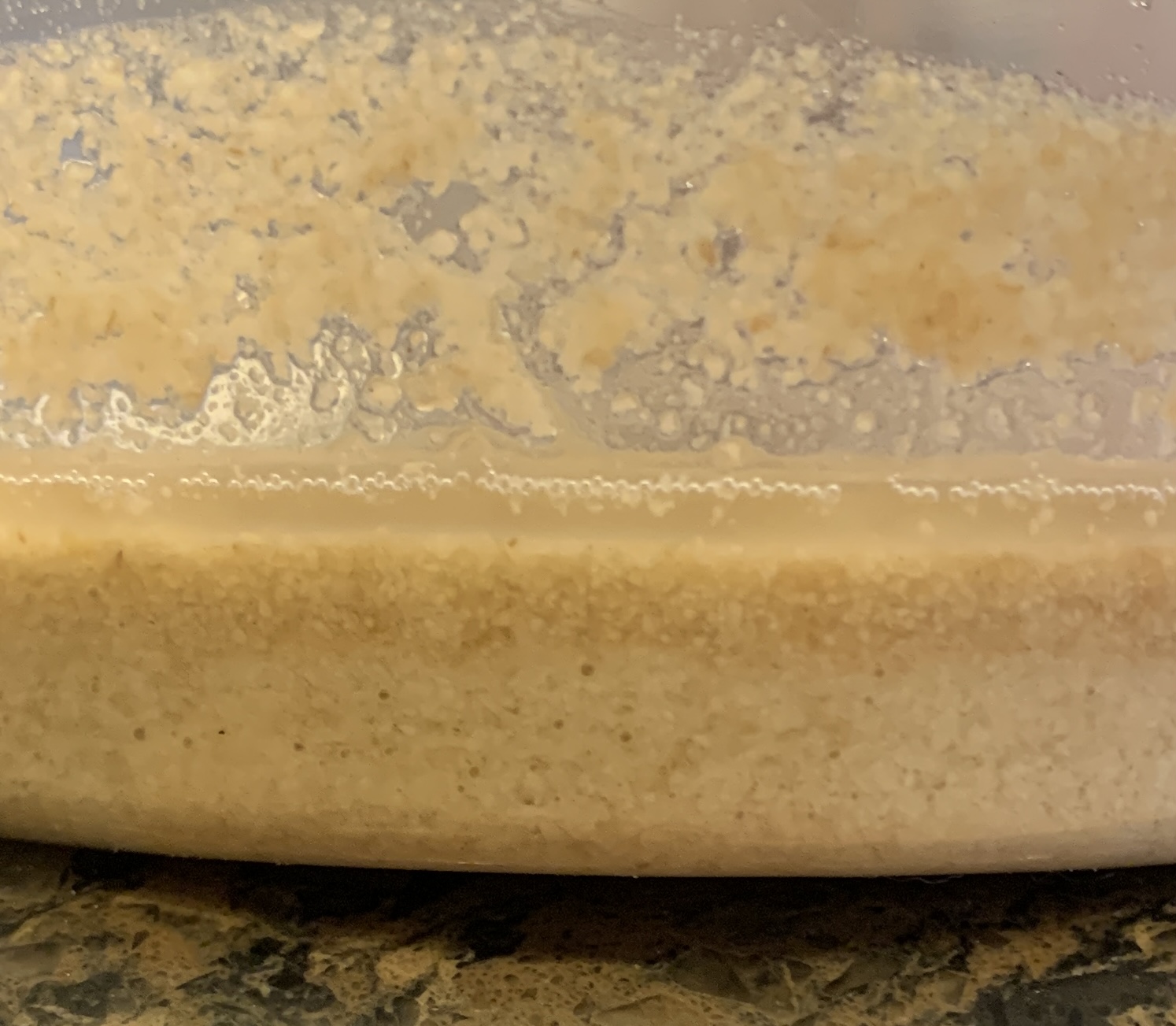
Bread flour biga gently mixed until just wetted. Ready for fermentation.
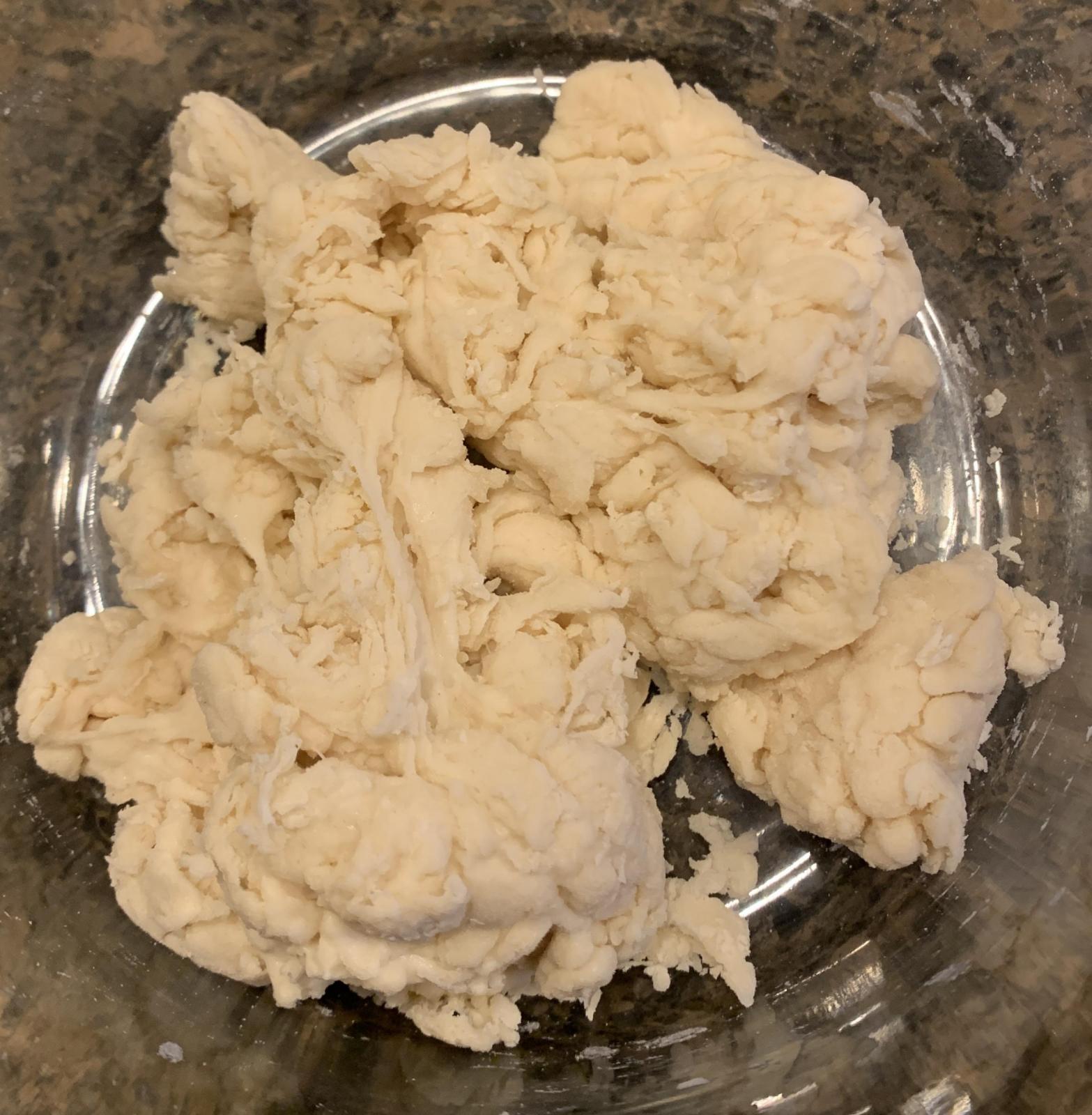
Roasted cereal grains (barley, buckwheat, and Bloody Butcher cornmeal) ready for milling
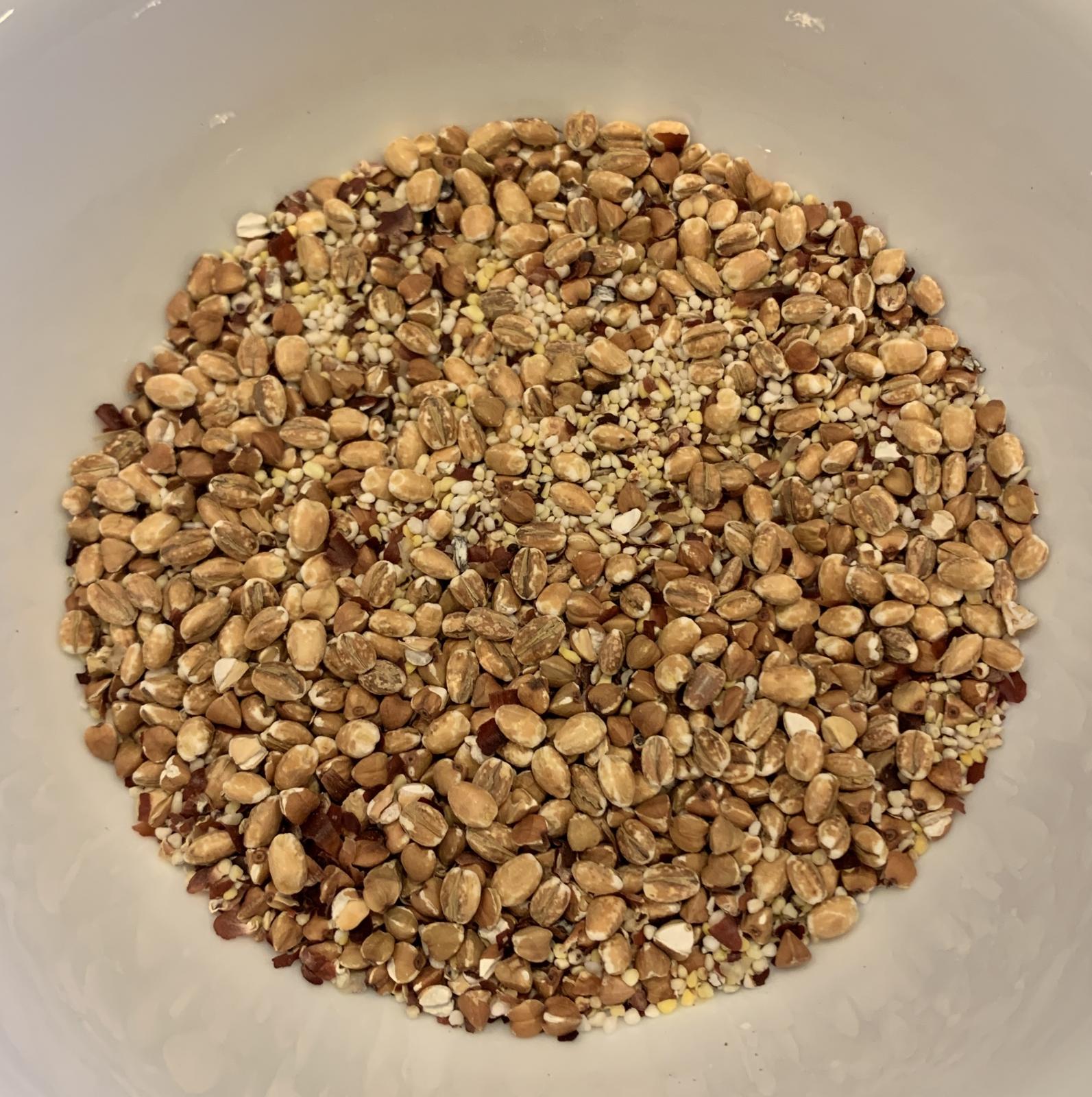
Roasted cereal grains/sunflower seeds and Ginger/Coconut flour/White rice flour/Roasted sesame seed scalds ready for boiling water
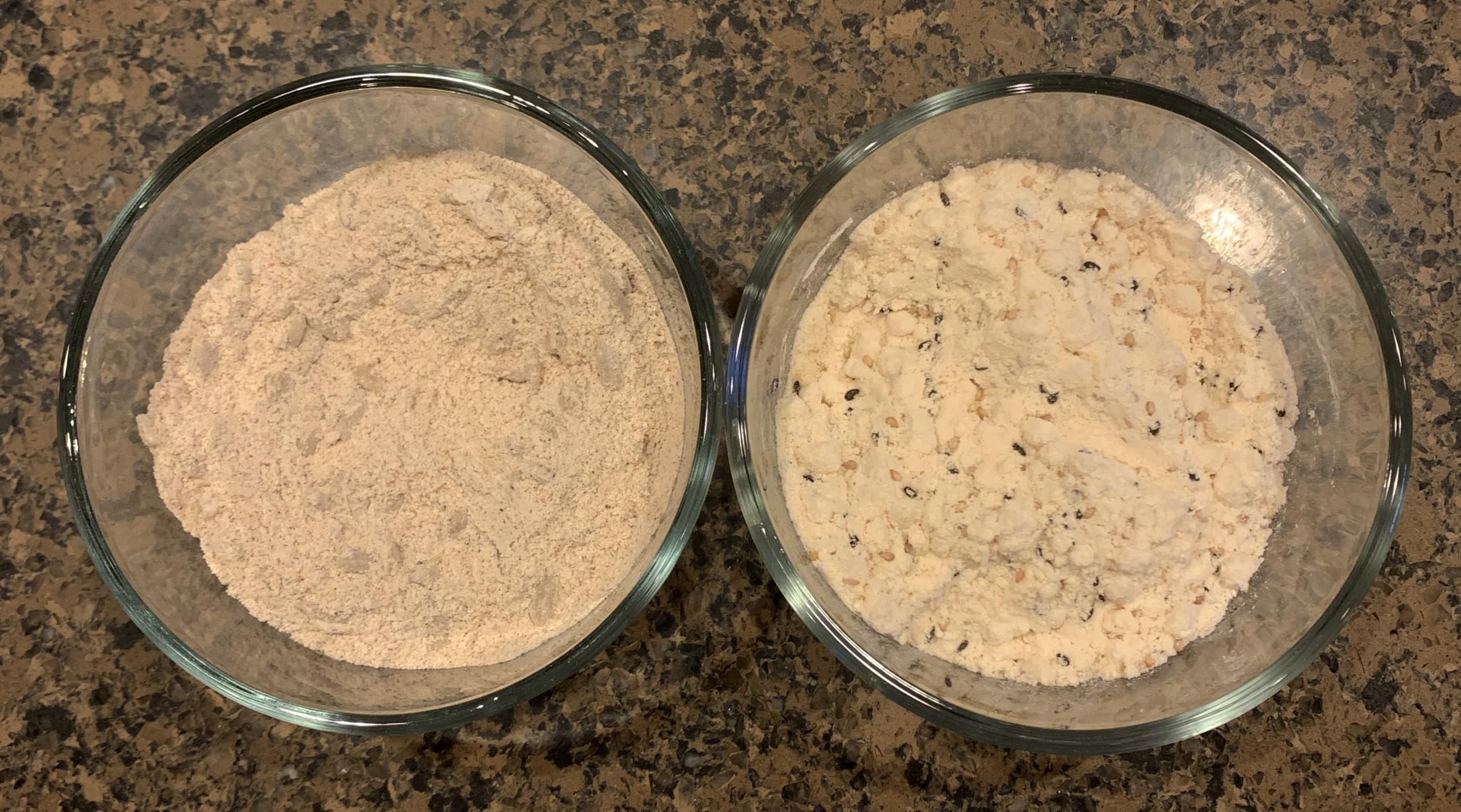
More to come later tonight after mixing along with full ingredient list....
Day 3
And they're baked! Take a step back and include the ingredient list...
Roasted Cereal Grains (Total Ingredient List)
148.5g Bread Flour
148.5g Turkey Red (Fresh milled)
63g Whole Rye (Fresh milled)
18g Whole Spelt
18g Whole Einkorn
18g Bloody Butcher cornmeal (Roasted)
18g Buckwheat (Roasted)
18g Hulled Barley (Roasted)
225g Water
90g Blueberry-Apple Yeast Water
9g Sea Salt
13.5g Molasses
13.5g Honey
4.5g Coriander
22.5g Sunflower Seeds (Roasted)
0.5g Active Dry Yeast (ADY)
1st Poolish Build
18g Whole Rye
36g Yeast Water
2nd Poolish Build
45g Whole Rye
27g Yeast Water
Biga
45g Bread Flour
27g Water
0.2g ADY
Scald
18g Bloody Butcher
18g Buckwheat
18g Barley
22.5g Sunflower seeds
133g Water (boiling)
Honey Ginger Sesame (Total Ingredient List)
148.5g Bread Flour
148.5g Turkey Red
63g Whole Kamut (Fresh milled)
22.5g Whole Spelt (Fresh milled)
45g Coconut Flour
22.5g White Rice Flour
225g Water
90g Blueberry-Apple Yeast Water
9g Sea Salt
22.5g Honey
22.5g Fresh Ginger Root (minced)
11.3g Sesame Seeds (Roasted)
0.5g Active Dry Yeast (ADY)
1st Poolish Build
18g Whole Kamut
36g Yeast Water
2nd Poolish Build
45g Whole Kamut
27g Yeast Water
Biga
45g Bread Flour
27g Water
0.2g ADY
Scald
45g Coconut Flour
22.5g White Rice Flour
22.5g Ginger Root
11.3g Sesame Seeds
135g Water (boiling)
Poolishes after 2nd Build... I had some scheduling conflicts and these went longer than they should. They were ready at about 9 hours, but I didn't mix until 12 hours. The Kamut formed a weaker dough or finished sooner. At the 9 hour mark it looked like the rye, but it collapsed significantly.
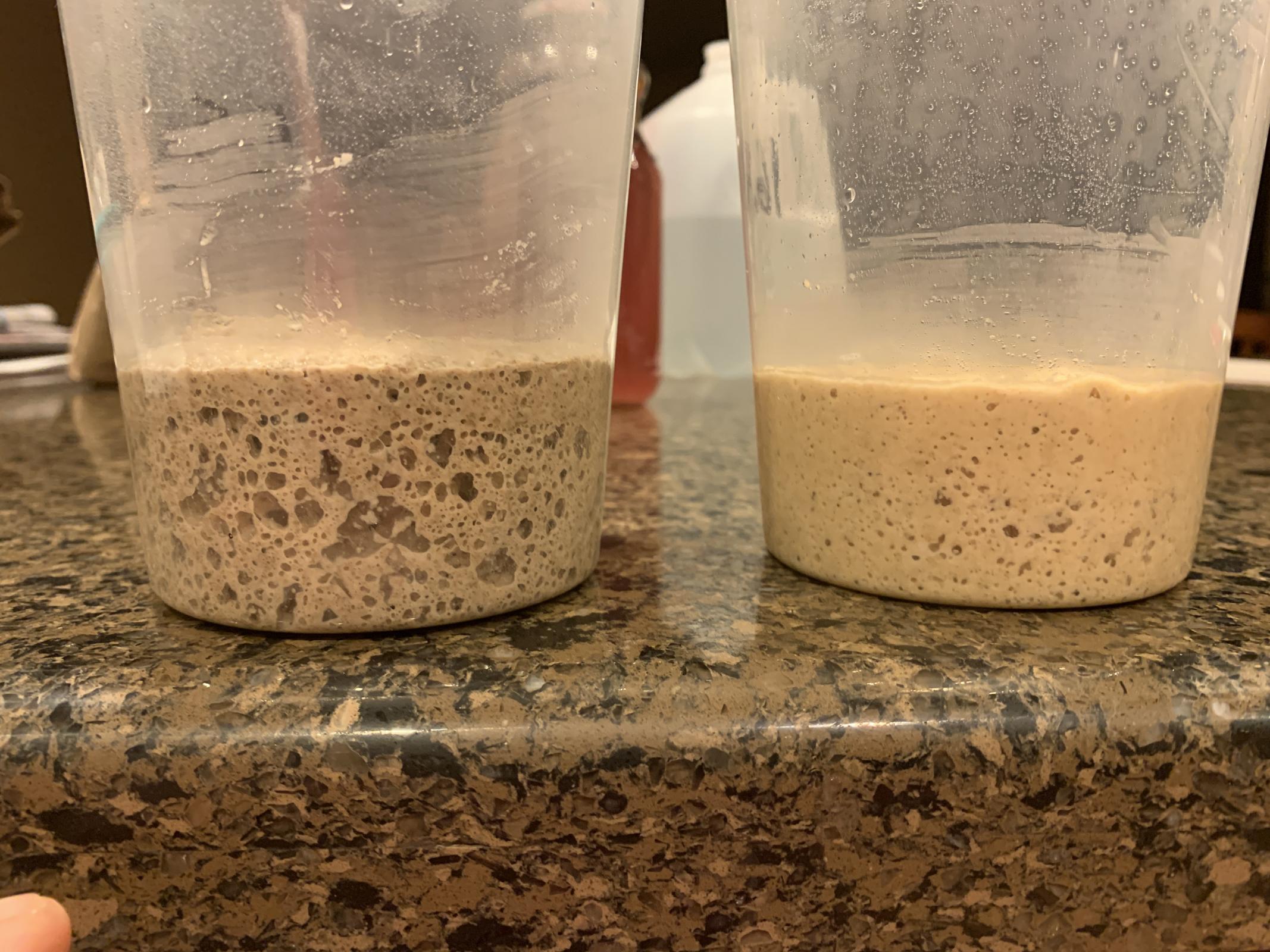
Bulk was 3 hours followed by a 20 minute bench rest after final shape and then 7 hours final proof in the refrigerator.
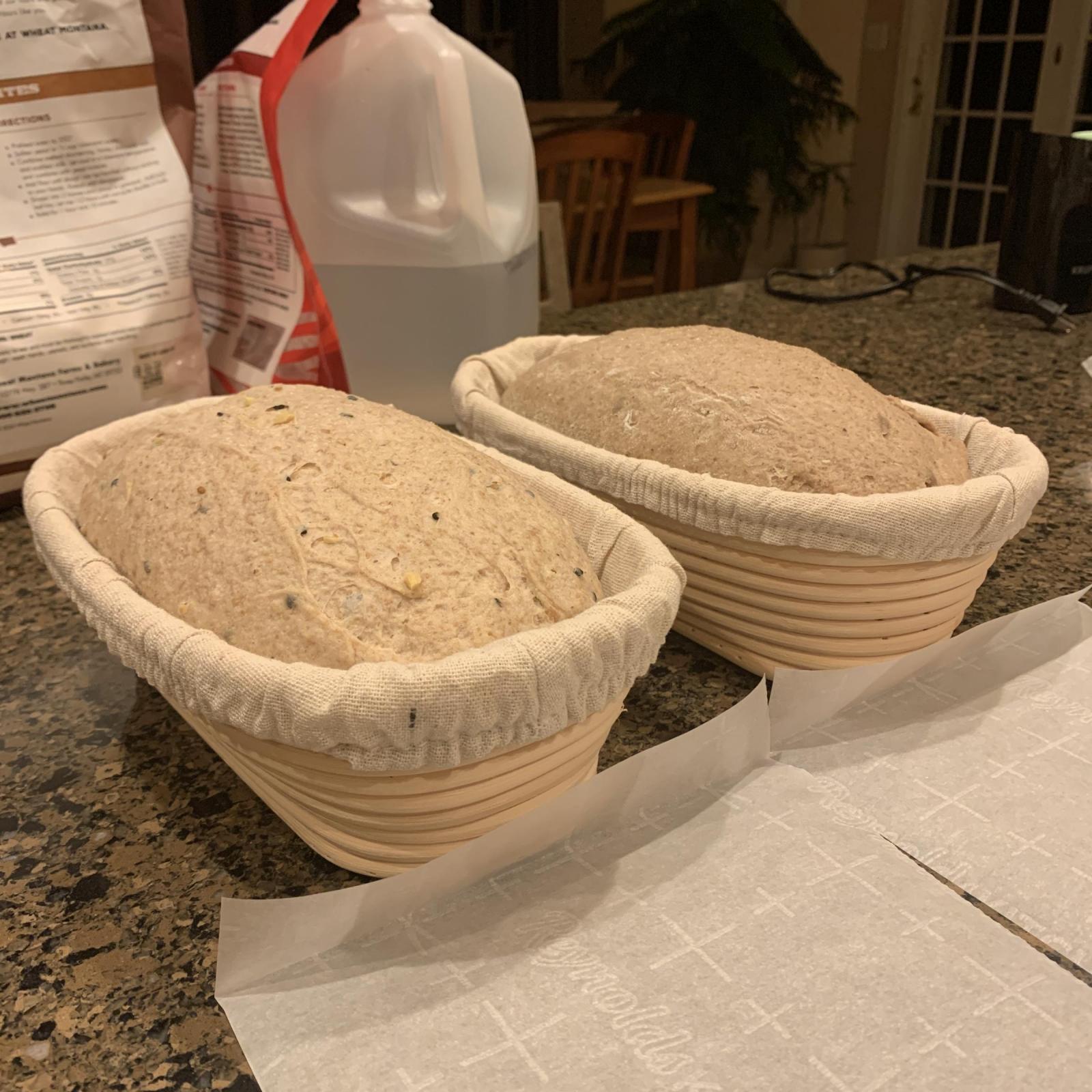
Baked with steam for 4 minutes (450 deg F), 4 minutes (425 deg F), 14 minutes (400 deg F). Vented oven and then baked 20 minutes (425 deg F), 20 minutes (375 deg F). I didn't get the bloom I was hoping for, especially with the Honey Ginger. It's my first time using coconut flour and I was surprised at how thirsty it was during the scald. In the end, this loaf smells wonderful and I think it will have a soft crumb, but it is more along the lines of a Gluten Free or high rye loaf in density. Overall though, I think they will both taste great, which is priority #1!
Honey Ginger Sesame on the left
